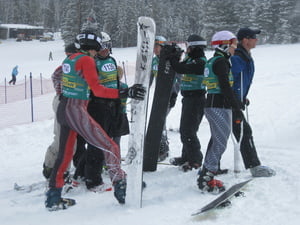Of all of the commands you might teach your dog in training, the “heel” command is probably the last on your list. Most dog owners don’t understand the value of the heel command until they take their dog on a walk. A well-behaved dog will stay at your side and not attempt to get ahead or behind you. The heel command also keeps your dog from stopping to smell every patch of grass and flower bed on your route, which is especially helpful when you’re trying to keep your heart rate up. Following is an explanation for how to teach your dog to heel.
The purpose of training your dog to heal is simple: It provides you with safety when your dog is out in public. Not only will your dog avoid stopping to look at things or to socialize with people or other animals, but it will also make your walks and outings more enjoyable. The heel command should be used any time your dog is on a leash, but particularly when you are walking.
Studies show that positive reinforcement works best when training dogs to heel. It gives them a reason to perform the suggested task and makes training more enjoyable. Train your dog to heel, you’ll need a fairly short leash, several dog biscuits and your dog’s normal, everyday collar. It might be best to start your training at home rather than out on the street to reduce distractions and to maintain focus.
Start by asking your dog to sit at your side with the leash taut but not too tense. Hold one of your dog treats at your hip, say “Heel!” and start walking forward. The desired response is for your dog to walk at your side, preferably not pulling forward or pulling back on the leash. Walk only five or six steps, stop, and praise your dog if he did what you asked. Give him the treat as a reward. This tells your dog not only that he’s heeled correctly, but also that you appreciate his cooperation.
As you continue training your dog to heel, ask him to behave for increasingly longer distances, rewarding him each time he completes the exercise correctly. If your dog begins to pull ahead or to lag behind, stop and say “No!” Then immediately ask your dog to heel again and begin walking forward. He only gets a reward if he heels correctly, but there is no negative stimulation other than the word “no”.
Some dog trainers prefer to use a combination of positive and negative reinforcement when training a dog to heel. This works for some dogs but can become an exercise in frustration for others. To use this method, you will need a longer leash than the one described above. You’ll give the dog an opportunity to play at the end of the leash, then you’ll ask the dog to sit by your side. When you walk forward, say “Heel!”, but the dog will probably not obey. To counter this measure, continue walking and the leash will be pulled taut, resulting in discomfort. Some dog trainers say that this is a faster method, but it might also result in resentment.
Training your dog to heal might take a few tries and you may discover that further training is required after you try the heel command out on the street, but once your dog understands what you are asking, you’ll both be better for it.





